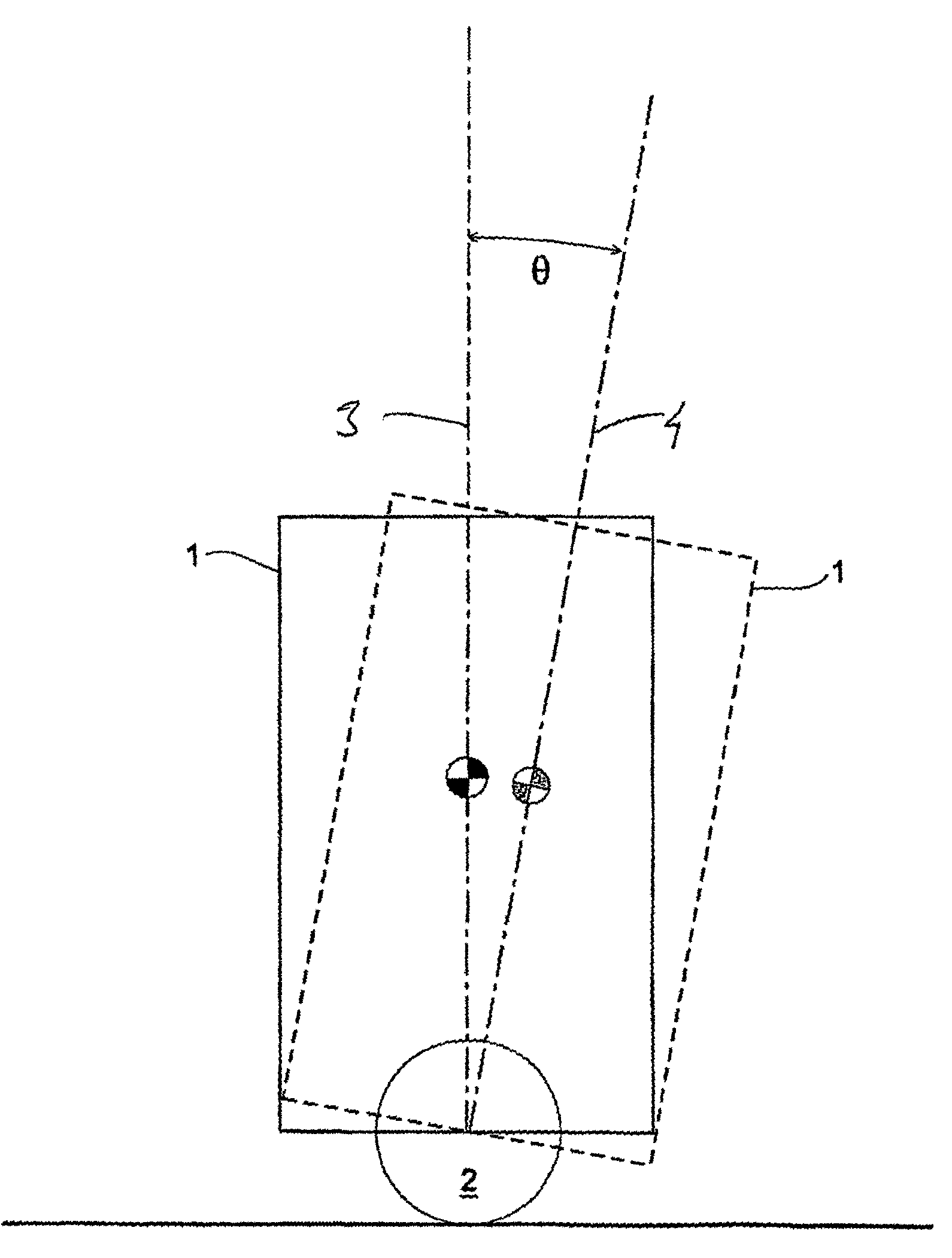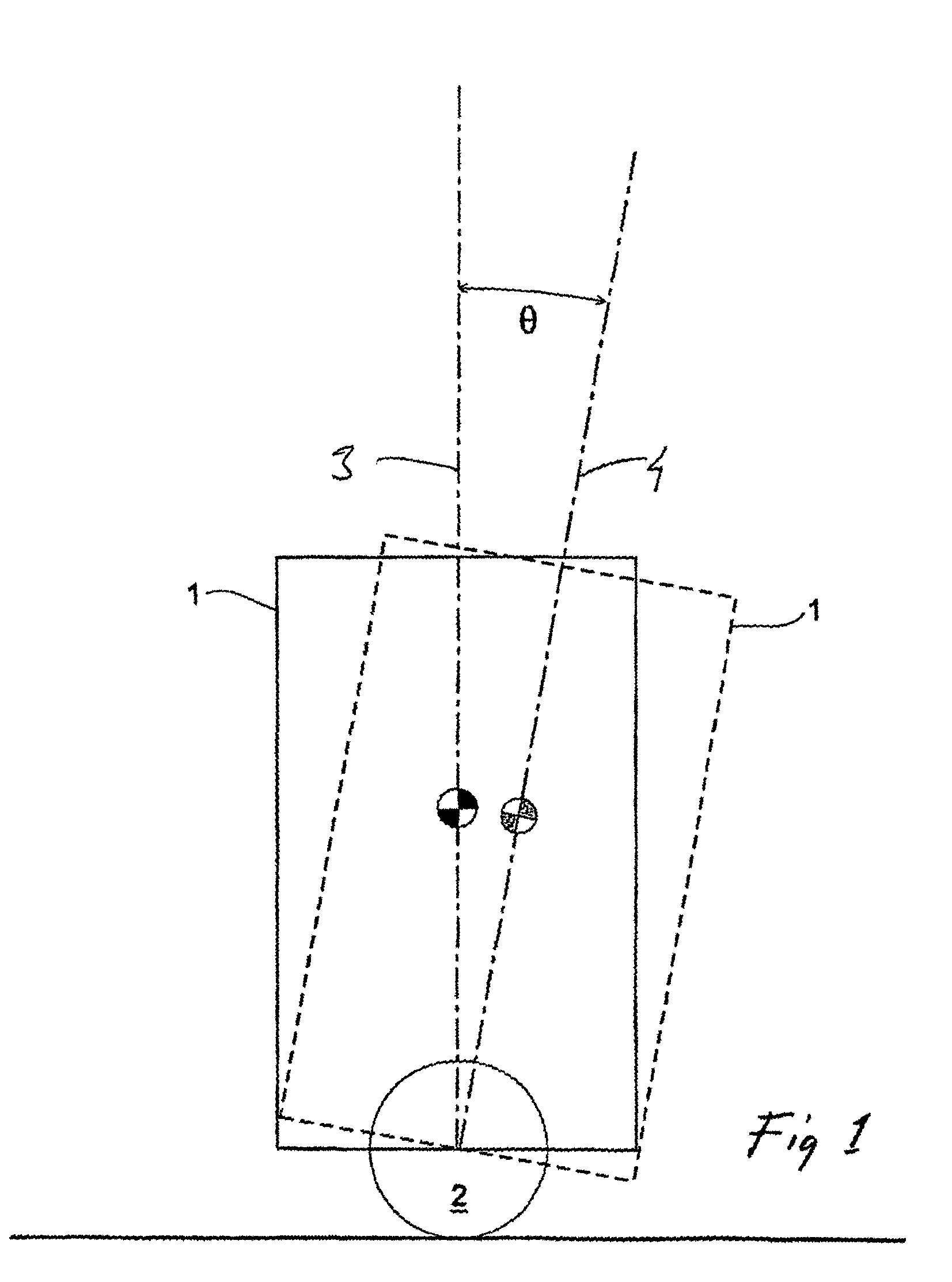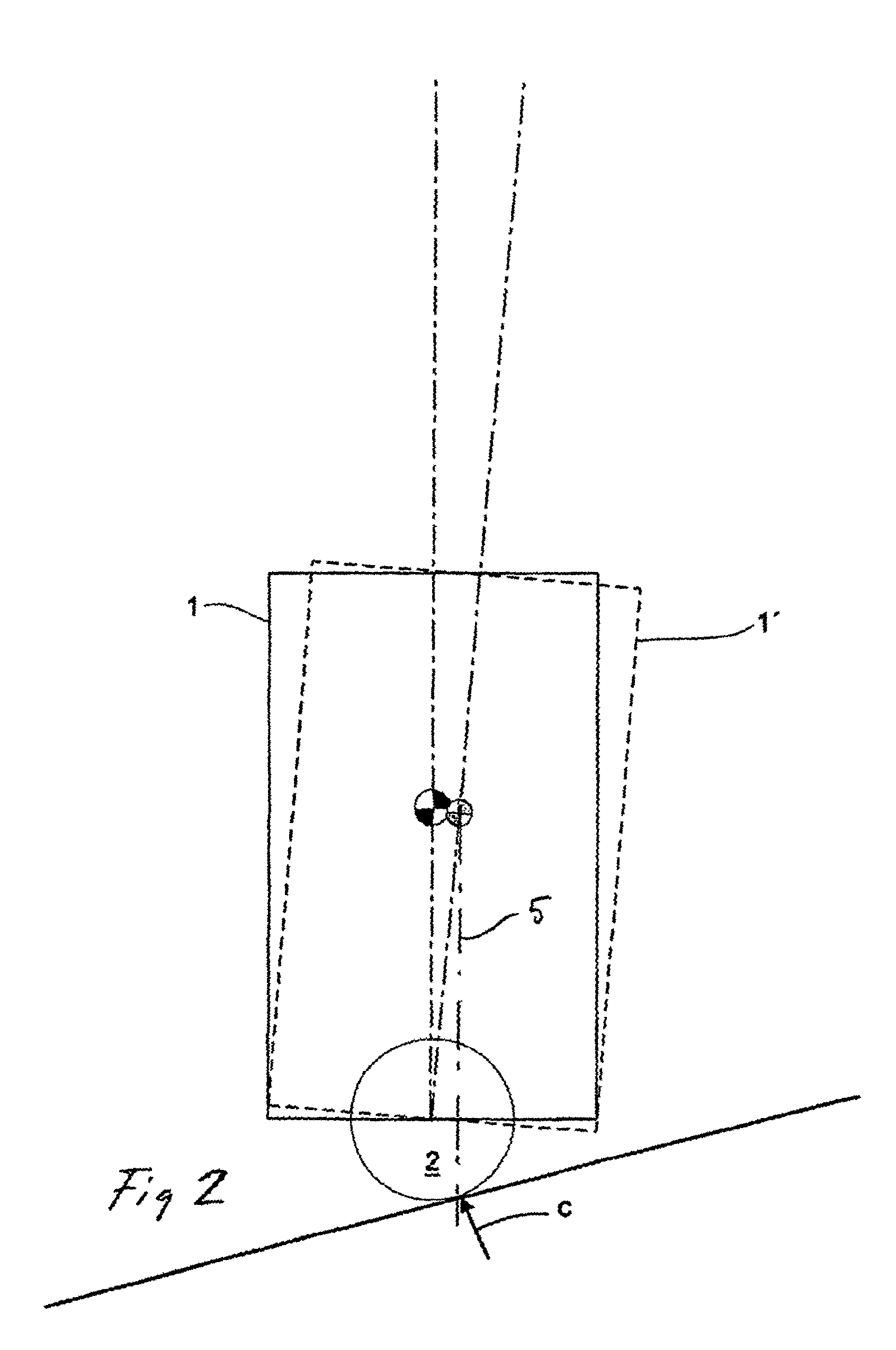Robot system
a robot and guided vehicle technology, applied in the field of robot systems, can solve the problems of high cost of robot production, high cost of system including a plurality of such automated guided vehicles, and high cost of robots, and achieve the effect of greater flexibility of the robot system
- Summary
- Abstract
- Description
- Claims
- Application Information
AI Technical Summary
Benefits of technology
Problems solved by technology
Method used
Image
Examples
Embodiment Construction
[0035]FIG. 1 purely schematically shows a two-wheeled robot according to the invention. The robot 1 has a body 1 preferably containing a processing unit for autonomous movement. This processing unit is included a system for oscillation damping / balance, steering and driving. In this preferred embodiment the processing unit also governs systems for orientation and navigation, as well as receiving signals from an onboard sensor / guidance system. This preferred autonomous mobile robot or autonomous mobile robot also has an on-board wireless communication interface for receiving and sending signals, which may be of short-range FM or so-called “Bluetooth” type.
[0036]The autonomous mobile robot runs on a single pair of coaxial driven wheels 2. These wheels are differentially driven, either by two separate electric motors or by variable differential gearing from a single motor, thereby providing steering, even being turnable about the robots own central vertical axis by driving the wheels in...
PUM
 Login to View More
Login to View More Abstract
Description
Claims
Application Information
 Login to View More
Login to View More - R&D
- Intellectual Property
- Life Sciences
- Materials
- Tech Scout
- Unparalleled Data Quality
- Higher Quality Content
- 60% Fewer Hallucinations
Browse by: Latest US Patents, China's latest patents, Technical Efficacy Thesaurus, Application Domain, Technology Topic, Popular Technical Reports.
© 2025 PatSnap. All rights reserved.Legal|Privacy policy|Modern Slavery Act Transparency Statement|Sitemap|About US| Contact US: help@patsnap.com



